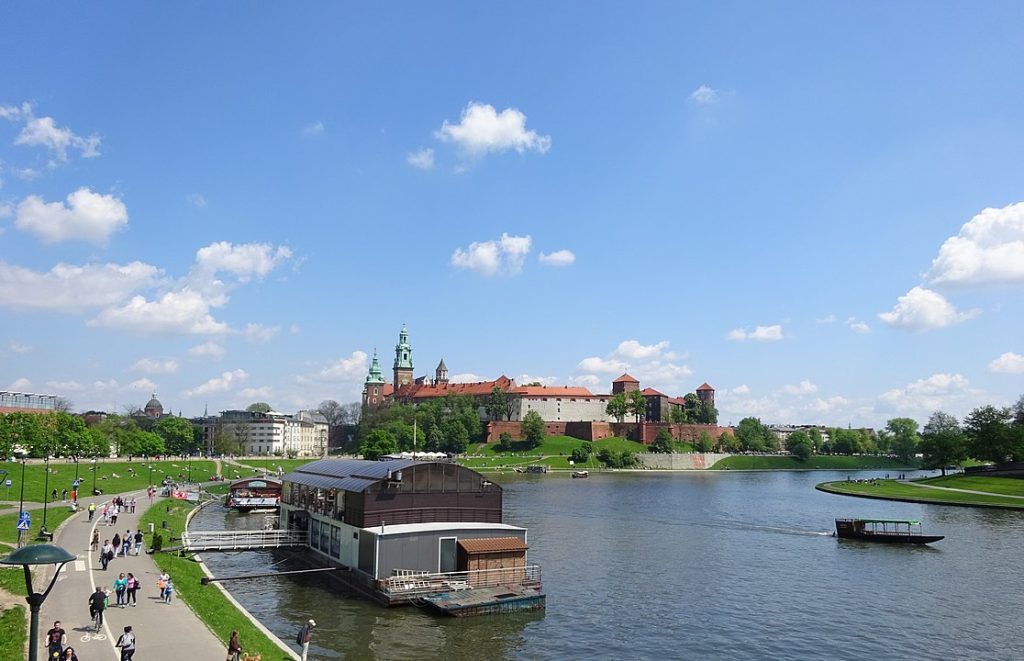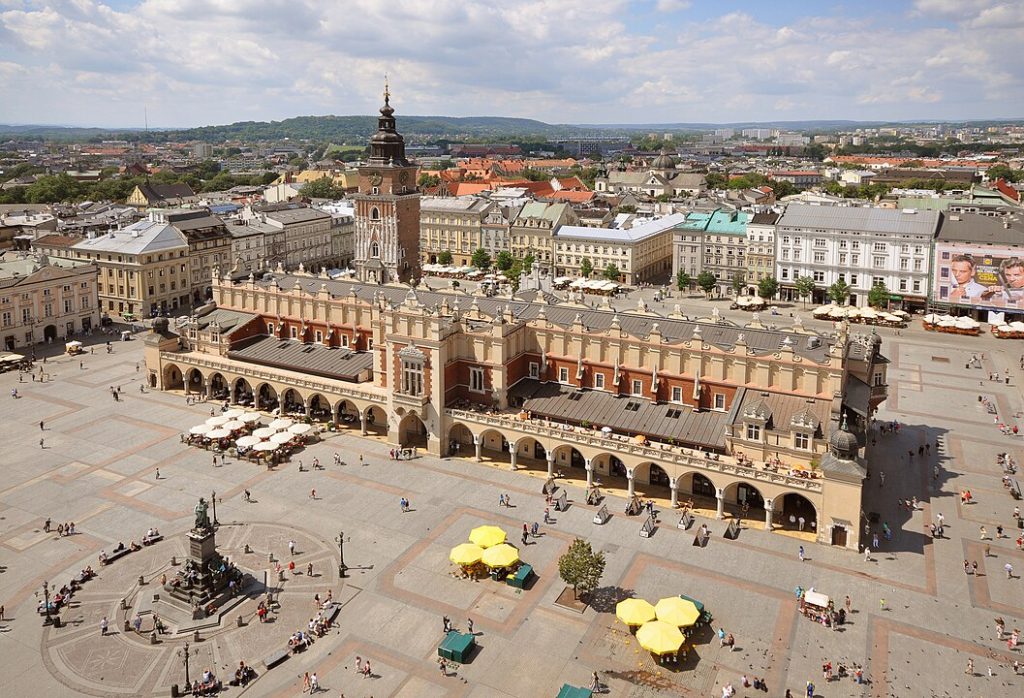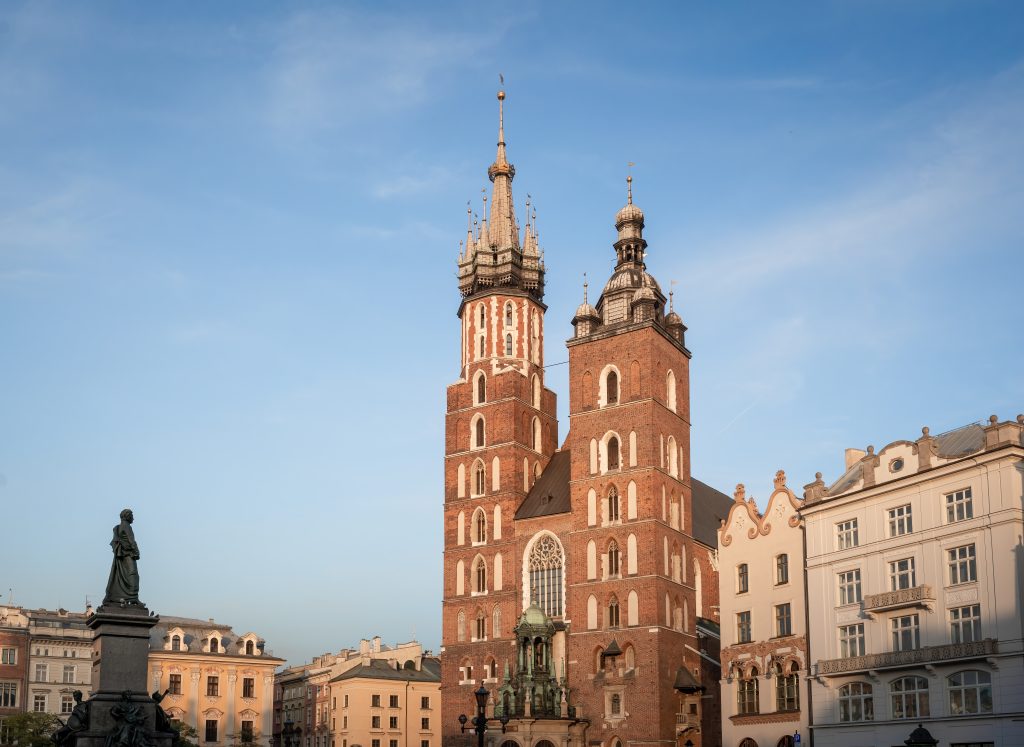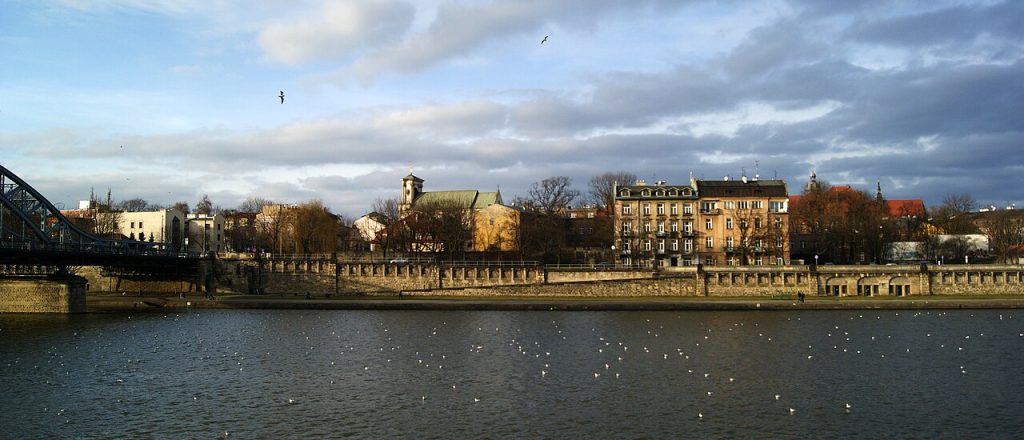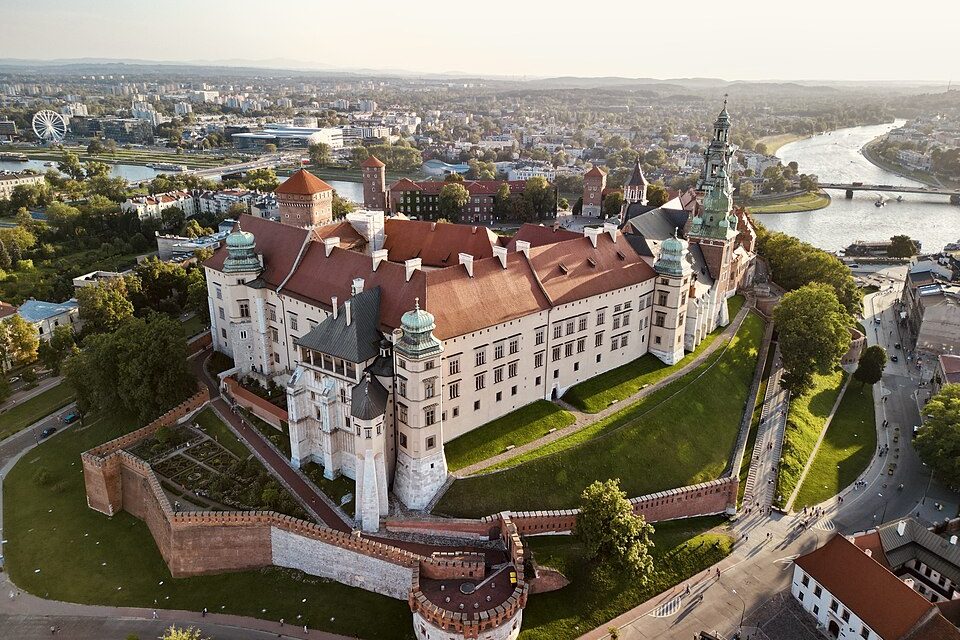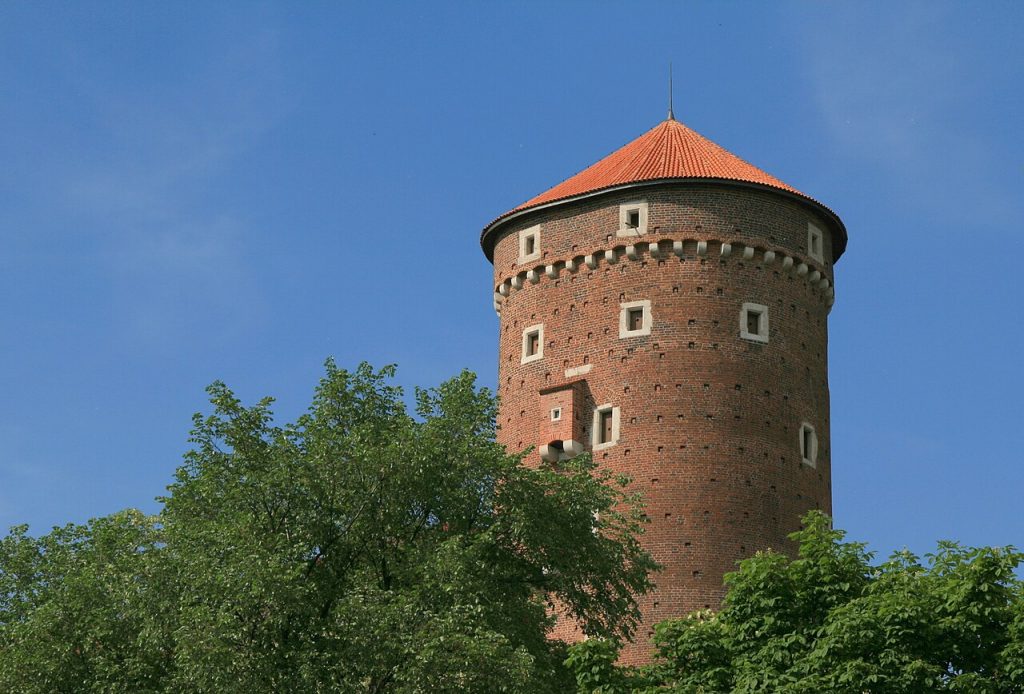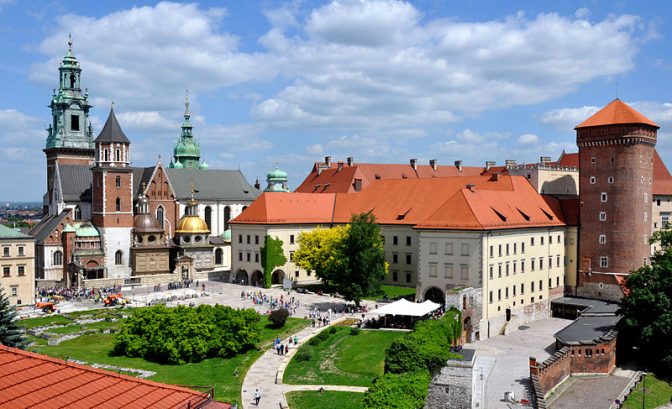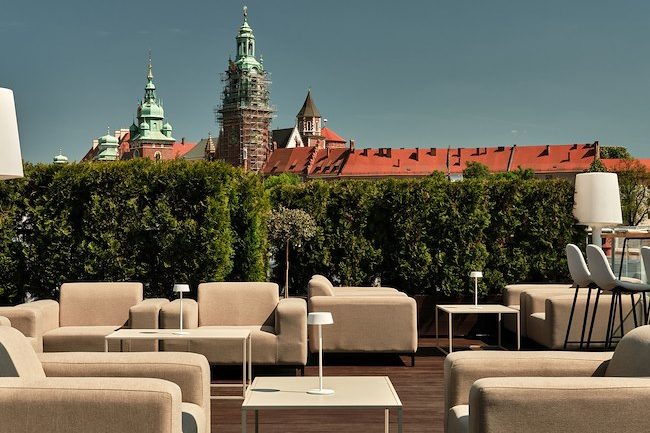- Introduction - why Wawel Castle is the heart of Polish history
- 1️⃣ Wawel Cathedral - the coronation and burial place of kings
- 2️⃣ Sigismund Chapel - the pearl of the Renaissance in Poland
- 3️⃣ Sigismund Bell - symbol of national events
- 4️⃣ Royal tombs - necropolis of Polish rulers
- 5️⃣ Crown Treasury - jewels and royal insignias
- 6️⃣ Armory - the military heritage of ancient Poland
- 7️⃣ Royal Apartments - daily life at court
- 8️⃣ Representative Rooms of the Castle - places of ceremonies and audiences
- 9️⃣ Wawel tapestries - masterpieces of Flemish weaving
- 🔟 The Arcade Courtyard - a Renaissance landmark of Wawel Castle
- 1️⃣1️⃣ Sandomierz Tower - guardian of the royal residence
- 1️⃣2️⃣ Dragon's Den - a legendary attraction at the foot of the hill
- 1️⃣3️⃣ Royal Gardens - restored Renaissance space
- 1️⃣4️⃣ Museum of Oriental Art - a unique collection at Wawel Castle
- 1️⃣5️⃣ Archaeological Reserve "Wawel Lost" - a journey into the medieval beginnings of the castle
- Summary - Wawel Castle as a living history museum
- 📍 Attractions in the area
- 🔗 Articles similar in subject matter
- 🔥 Most popular articles in the last week
- 💬 Opinions
Introduction - why Wawel Castle is the heart of Polish history
Wawel Royal Castle is the place where the Poland's history, art and legend are intertwined. It was here that for centuries kings resided, the most important political decisions were made, and coronations and state ceremonies were held. Wawel Castle is not only a monument - it is a symbol of polish identity and national pride, a UNESCO World Heritage Site.
Walking down the hill, you can feel the atmosphere of bygone eras - from the Middle Ages, through the Renaissance and Baroque, to modern times. Every corner of Wawel Castle hides a story: from the majestic cathedral, to the royal apartments, to the legendary Dragon's Den. It is a place that delights both history lovers and tourists looking for the unique atmosphere of Krakow.
1️⃣ Wawel Cathedral - the coronation and burial place of kings
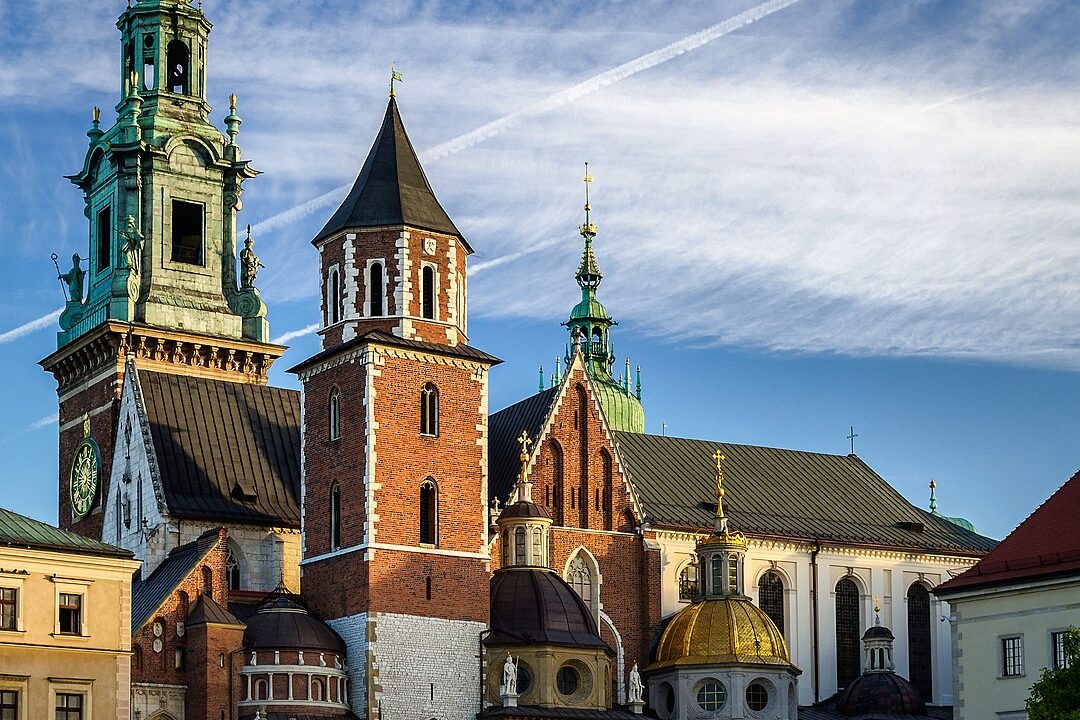
Wawel Cathedral is a The spiritual and historical heart of Poland. It was here that for centuries the coronations of polish rulers, and the sounds of solemn masses and royal ceremonies echoed under the monumental vaults. Each step through its interior reminds us that we are in the place where Polish statehood was formed.
In the basement of the cathedral rests the greatest national heroes - kings, leaders and poets, including Wladyslaw Jagiello, John III Sobieski, Tadeusz Kosciuszko and Adam Mickiewicz. It is also worth stopping by Sigismund Chapel, called the pearl of the Renaissance, whose golden dome shines over the hill.
Wawel Cathedral is not only a place of prayer - it a living chronicle of polish history, whose importance can hardly be overestimated. Everyone who visits Krakow should at least once stand in this unique place to feel the majesty of the old days.
2️⃣ Sigismund Chapel - the pearl of the Renaissance in Poland
🏰 This is where every Krakow story begins
👉 See what it delights with Main Market - Europe's largest medieval square!
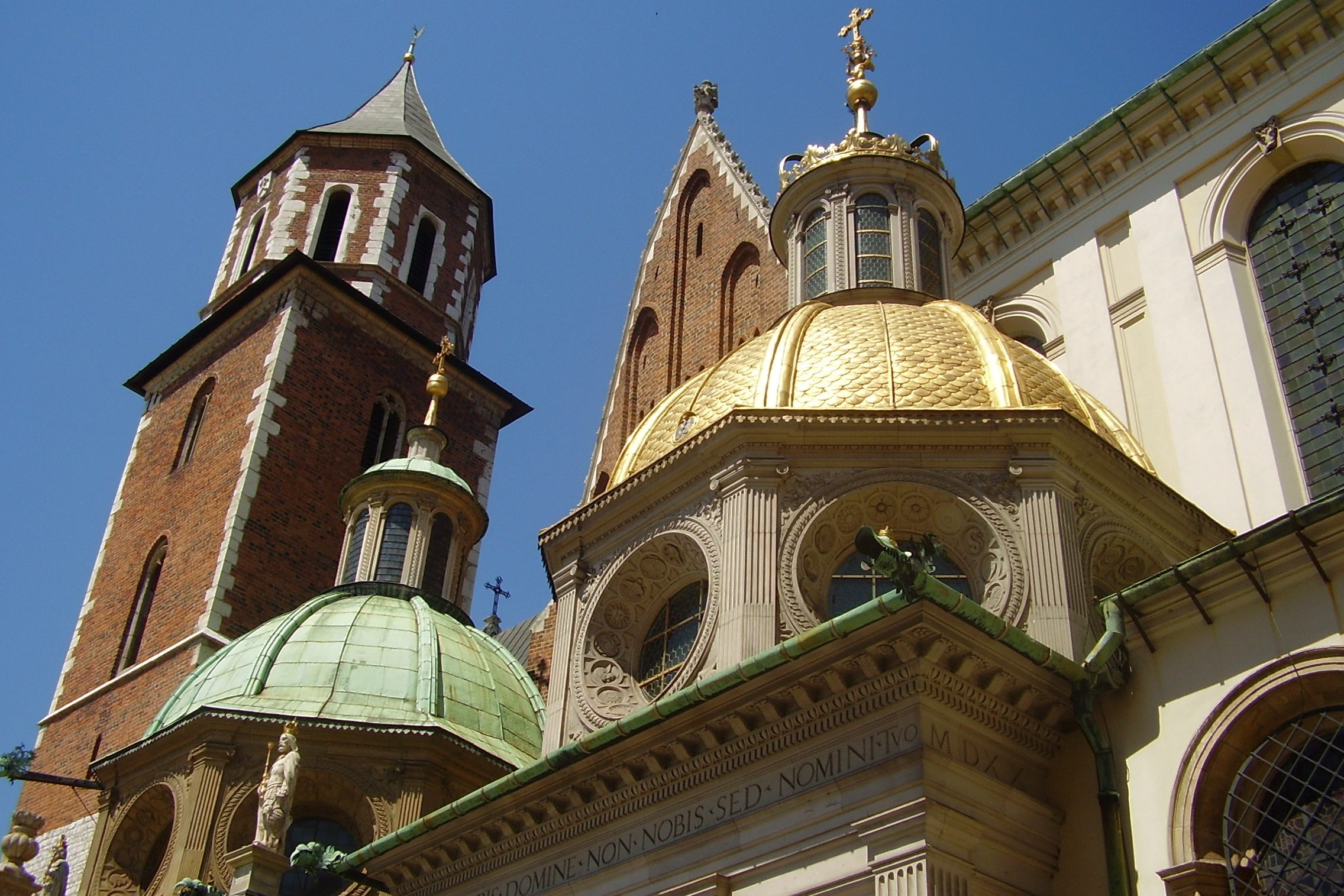
The Sigismund Chapel, added to Wawel Cathedral in the 16th century, is considered the The most beautiful example of the Renaissance north of the Alps. Created on the initiative of Sigismund the Old, it was to be a royal mausoleum and a place worthy of the Jagiellonian dynasty. Its gilded dome, glistening in the sunlight, became one of the most recognizable symbols of the entire Wawel Castle.
The interior of the chapel is stunning harmony of details and richness of decoration. The masters of the Italian Renaissance combined the art of sculpture, architecture and painting here, creating a true masterpiece. Attention is drawn to the monumental sarcophagi of Sigismund the Old and Sigismund Augustus, as well as the unique ornamentation, full of symbolism and artistry.
This chapel is often referred to as "a jewel in the crown of Wawel Castle", and its beauty is sometimes compared to the finest Renaissance monuments in Italy. Visiting it, you can feel the atmosphere of the era when Poland was in the golden age of its power.
3️⃣ Sigismund Bell - symbol of national events
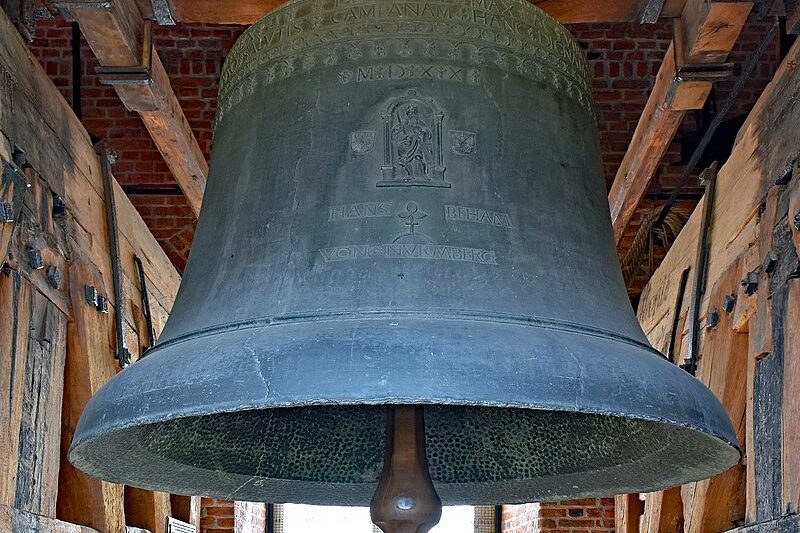
The Sigismund Bell is the most famous bell in Poland and one of the largest in Europe. Suspended in the Sigismund Tower of Wawel Cathedral, it was cast in 1520, commissioned by King Sigismund the Old. Its powerful sound, heard throughout Krakow, has accompanied the The most important moments in the history of the country - Both joyful and tragic.
It weighs more than 12 tons, and it takes as many as a dozen bell ringers to set it in motion. Tradition says that the tolling of the Sigismund Bell has the power to uniting Poles, reminding them of their shared history and heritage. It is sounded only at special moments, such as coronations, national funerals or major religious holidays.
Legend has it that anyone who hears its voice live at least once will experience an emotion that is difficult to describe in words. The Sigismund Bell is not only a monument, but also a a living symbol of Polish tradition and spiritual strength.
4️⃣ Royal tombs - necropolis of Polish rulers
👀 Cracow from a bird's eye view
👉 Meet best viewpoints, including as many as 5 famous mounds!
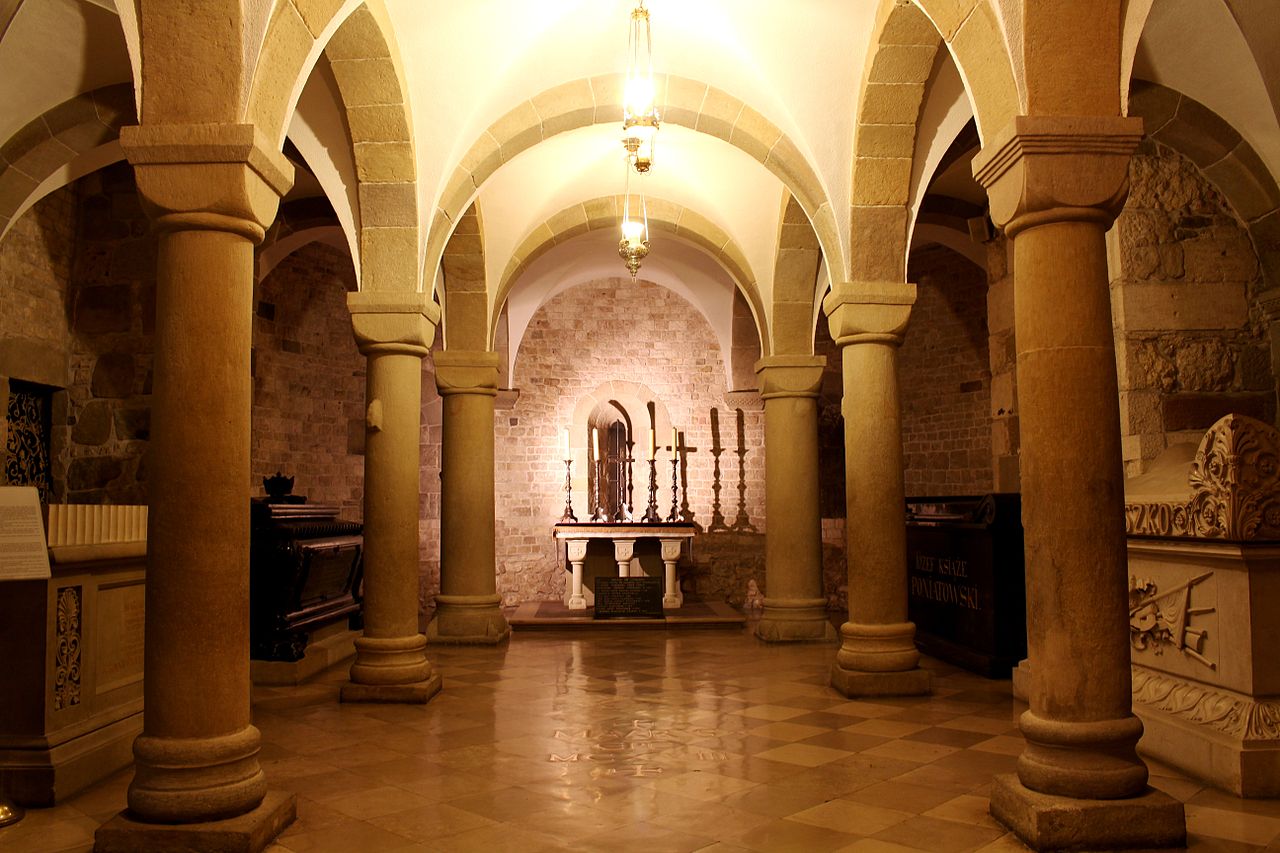
The vaults of Wawel Cathedral conceal one of the most important sites in Poland. royal necropolis, where rulers, national heroes and great creators of culture rest. It is here that the tombs of, among others, Wladyslaw Lokietek, Casimir the Great, Wladyslaw Jagiello, John III Sobieski and Sigismund III Vasa are located. Each sarcophagus tells a fragment of the history of a country that shaped the fate of Europe for centuries.
Also particularly impressive is the Crypt of the National Bards, where Adam Mickiewicz, Juliusz Słowacki and Czesław Miłosz are buried. Their presence next to the monarchs underscores that not only rulers, but also poets and artists were the guardians of the Polish spirit.
Walking through the cool stone corridors of the underground, visitors feel an unusual atmosphere - this meeting with history and national memory, which is moving and thought-provoking. The royal tombs are a place where Poland's past becomes exceptionally tangible.
5️⃣ Crown Treasury - jewels and royal insignias
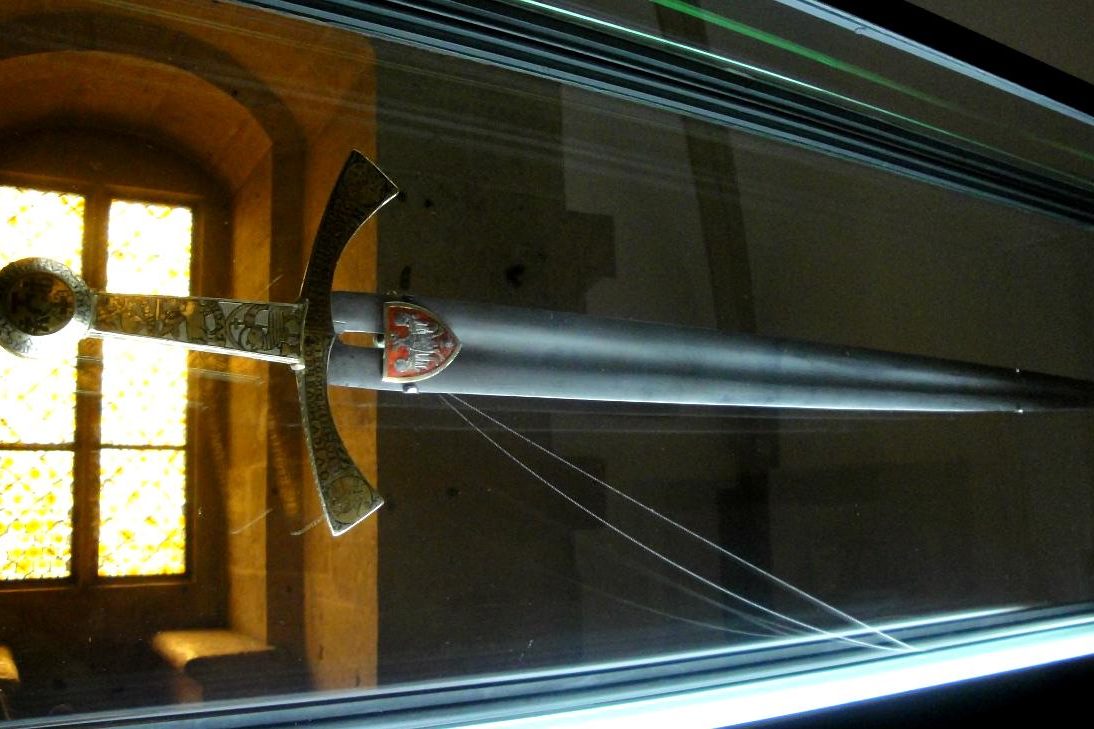
The Crown Treasury is one of the most valuable places in Wawel Castle, where for centuries the following have been stored symbols of polish royal power. Here were crowns, scepters, apples and other insignia that accompanied the most important ceremonies, such as coronations and ceremonial tributes. Although many of these priceless treasures were looted during the wars, one can still admire the collection, which inspires awe and respect.
Among the most valuable exhibits are "Szczerbiec" coronation sword, used during the coronations of almost all Polish kings from the 14th to the 18th century. It is a true relic of Polish history, shrouded in legends and symbolizing the power of the monarchy.
The treasury also hides numerous jewels, gold and silver objects, richly decorated souvenirs and war trophies. Visiting the place, one has the feeling that it still exudes a the splendor of ages past, when Poland was one of the most important kingdoms in Europe.
6️⃣ Armory - the military heritage of ancient Poland
🖼 Art for free? Always!
👉 Here's Top 10 free museums in Krakow - history without a ticket!
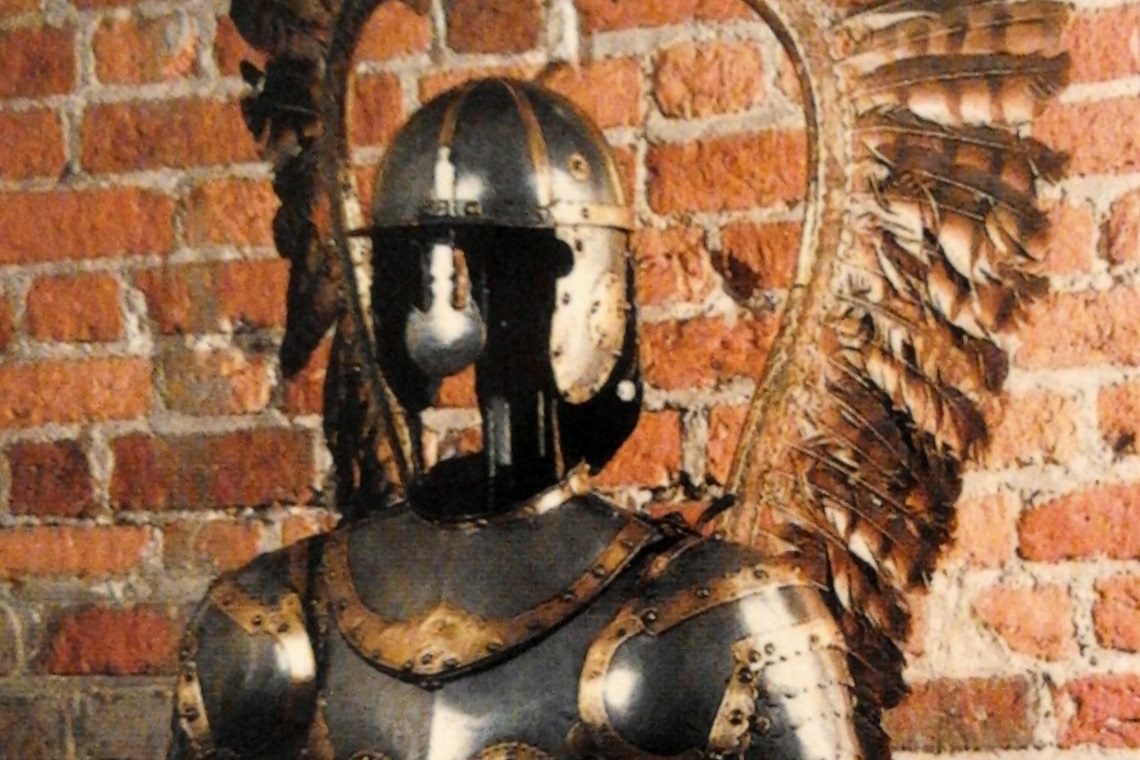
The armory at Wawel Castle is permanent museum exhibition, which is part of the exhibition Crown Treasury and Armory. It presents what the armament of Polish knights and soldiers looked like over the centuries. The collection includes white weapons, armor, helmets, crossbows and halberds, as well as richly decorated pieces that were symbols of prestige and power of rulers. There's also no shortage of firearms - from primitive hackneys to magnificent cannons.
Among the most valuable exhibits are Hussar armor with distinctive wings, which are an icon of the Polish military. Their sight is very impressive and reminds us of the victories that secured Poland's place among the most powerful countries in Europe.
The armory is not only a collection of ancient militaria - it is a a living history lesson, which allows you to move back to the times of battles and great campaigns. Each exhibit is a fragment of the story of courage, honor and the art of war, which for centuries shaped the history of our country.
7️⃣ Royal Apartments - daily life at court
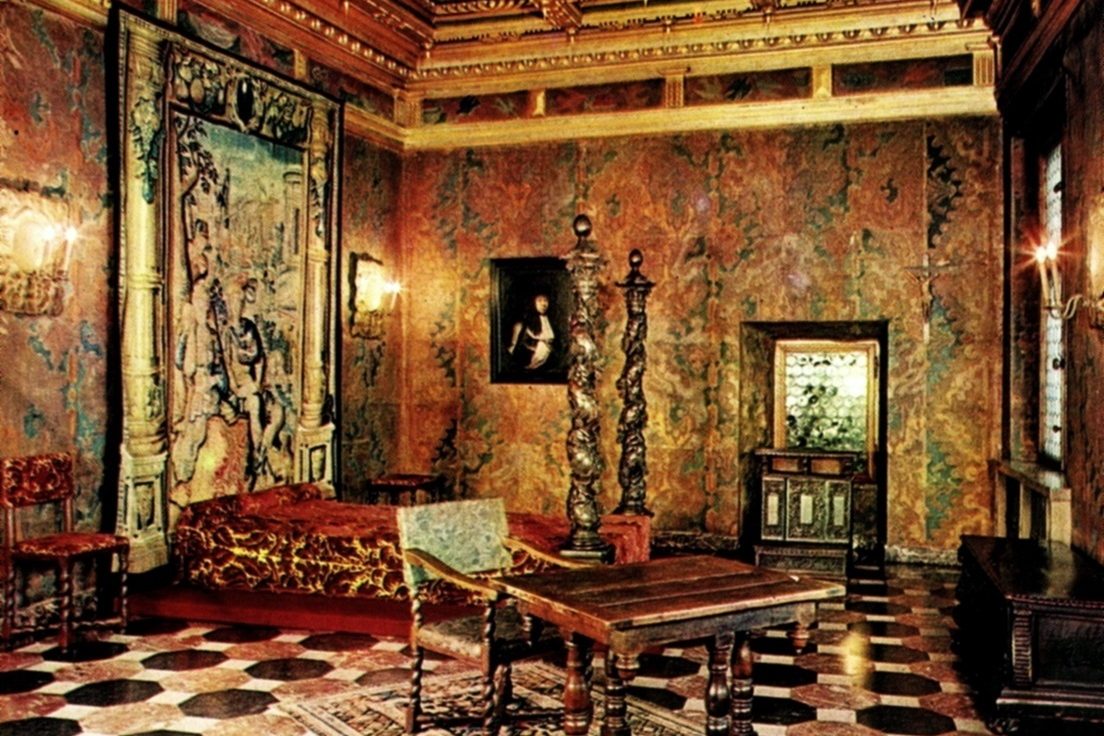
The Royal Apartments at Wawel Castle reveal the behind-the-scenes life of monarchs and their families. It was here that the everyday life of polish rulers, away from the ceremonial halls and representative ceremonies. The rooms delight in the richness of the decor - the walls are decorated with tapestries and Renaissance paintings, and old furniture and everyday objects allow you to imagine the atmosphere of court life.
In these interiors, the kings spent time with their loved ones, made private decisions and took a break from the hustle and bustle of politics. Particularly impressive are queen's chambers, full of subtle embellishments and details that show attention to comfort and aesthetics.
Visiting the apartments, you can feel like a guest of the royal court - this an intimate journey into the past, which shows not only great politics, but also the human side of the rulers' lives.
8️⃣ Representative Rooms of the Castle - places of ceremonies and audiences
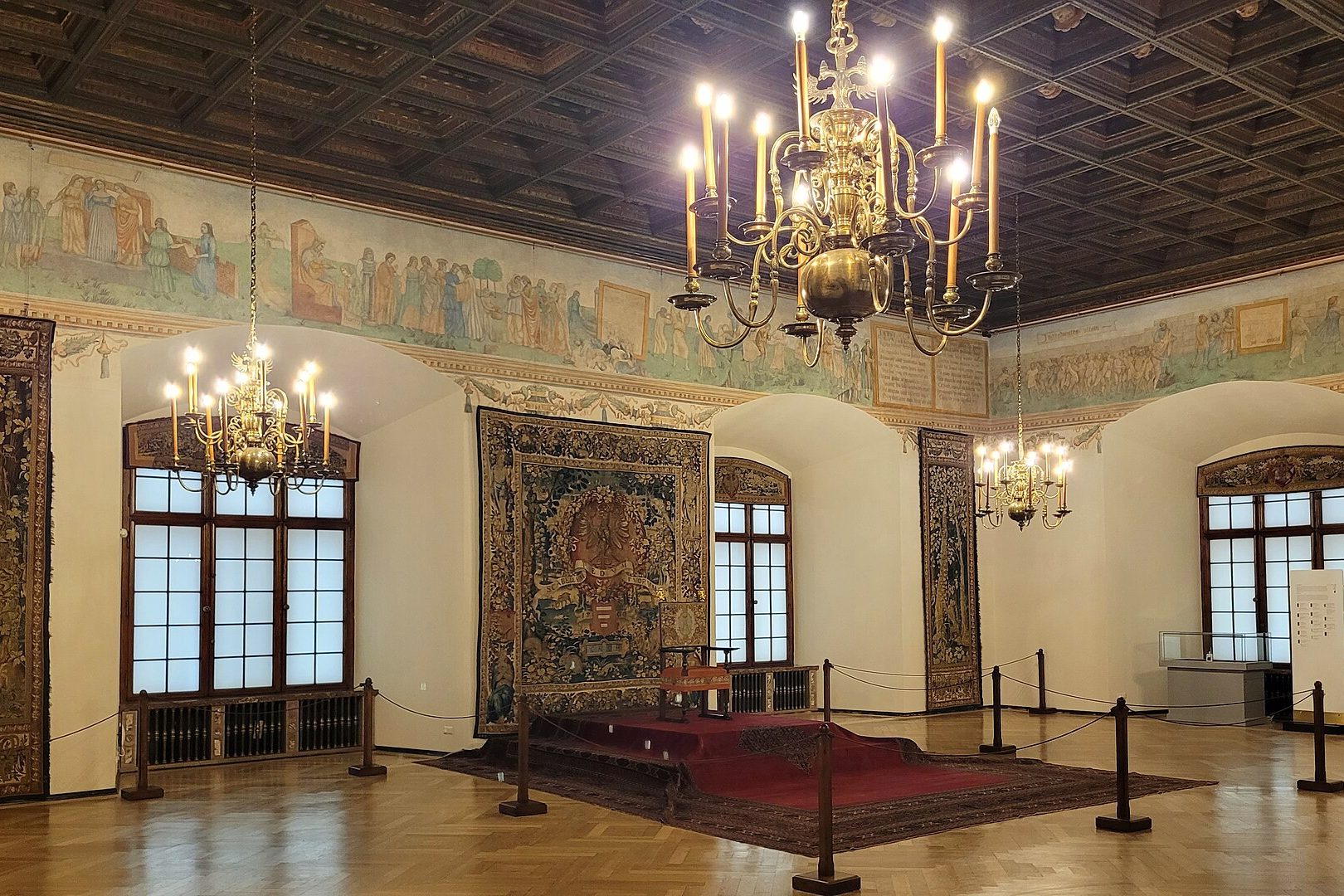
The Representative Halls of Wawel Castle are the spaces where the following were held major state and diplomatic events. Here the kings received foreign envoys, held balls, feasts and celebrations to dazzle with splendor and emphasize the power of the Polish monarchy.
The most famous is Members' Hall, famous for its unique coffered vault, which features carved heads - the so-called "coffered vault". wawel heads. Their mysterious gazes still stir the imagination today and remind us of the rich symbolism of the Renaissance era. Equally impressive are the Senator's Hall whether Hall Under the Birds, where the fate of the country was once decided.
Each of these halls is like a stage set of great history - sumptuous tapestries, ornate furniture and architectural details make visitors feel the atmosphere of ancient court ceremonies. These are places that showcase Wawel as a political and cultural center of the former Republic of Poland.
9️⃣ Wawel tapestries - masterpieces of Flemish weaving
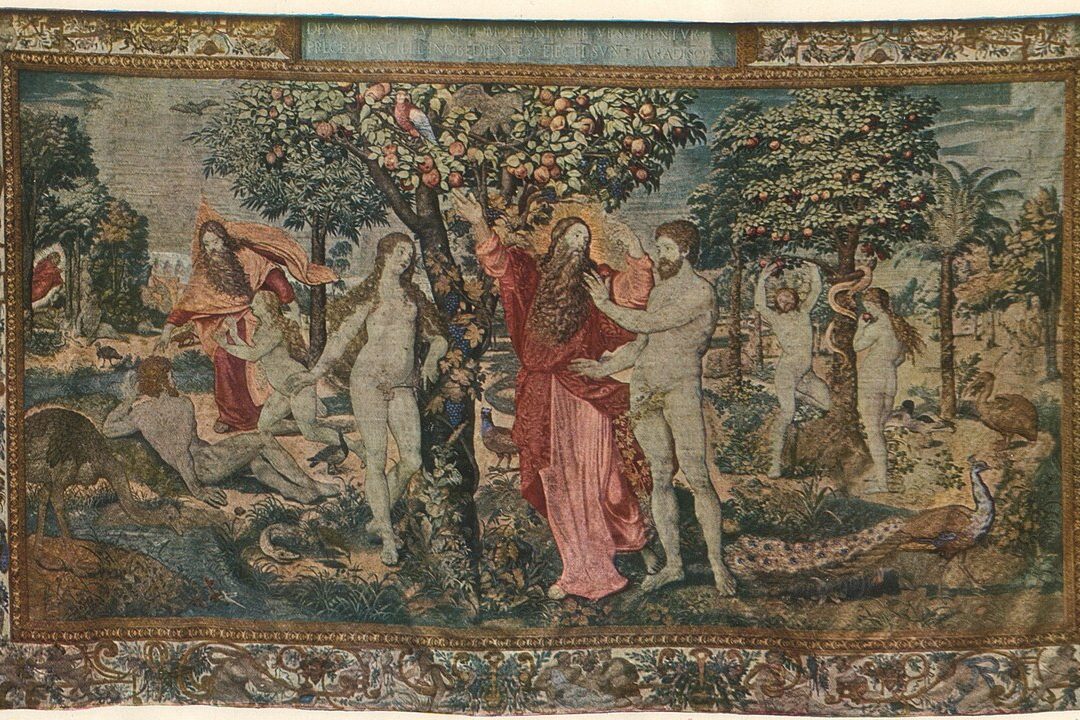
The Wawel Arras is a priceless art treasure that attracts the attention of tourists from all over the world. Commissioned in the 16th century by King Sigismund Augustus in Flemish workshops, they still impress today with their grandeur and richness of detail. The collection originally included more than 300 fabrics, some of which have survived to the present day and adorn the castle halls.
The themes of the tapestries are extremely varied - from biblical scenes, to depictions of animals and landscapes, to abstract floral patterns. Each of them is unique work of art, woven from wool, silk and threads of gold and silver. This makes them of great historical and symbolic value in addition to their artistic value.
Arras not only decorated interiors, but also served a practical function - warming chambers and improving acoustics. Today they are considered to be the finest collection of its kind in Europe, which is the pride and testimony of the power of the former Poland.
🔟 The Arcade Courtyard - a Renaissance landmark of Wawel Castle
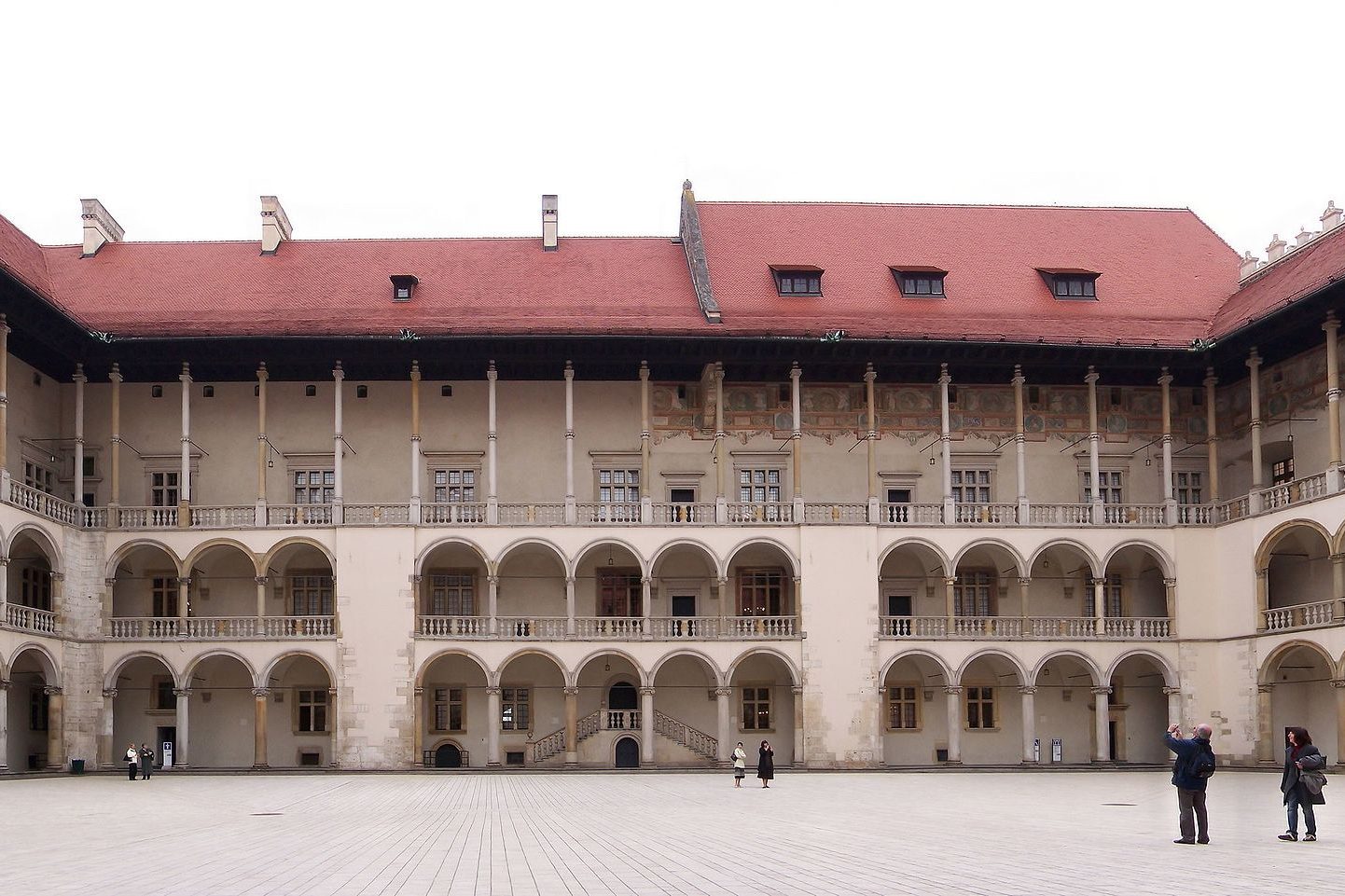
The Arcade Courtyard is one of the most recognizable places in Wawel Castle, being a a pearl of renaissance architecture. Surrounded by three-level cloisters, it creates a harmonious space where the lightness of the arcades combines with the majesty of the royal residence. It was here that court ceremonies, parades and theatrical performances were held to highlight the splendor of the Jagiellonian dynasty.
Walking through the cloisters gives a unique impression of being transported back to a time when kings, knights and courtiers strolled through the courtyard. The eye is drawn to the elegant columns and arcade symmetry, which became the inspiration for many later buildings in Poland.
The Arcade Courtyard is also a favorite place for tourists and residents of Krakow - its space is delightful both in the brightness of the day and in the evening, when the lighting highlights the beauty of the Renaissance details. It is heart of the castle, where history meets architectural excellence.
1️⃣1️⃣ Sandomierz Tower - guardian of the royal residence
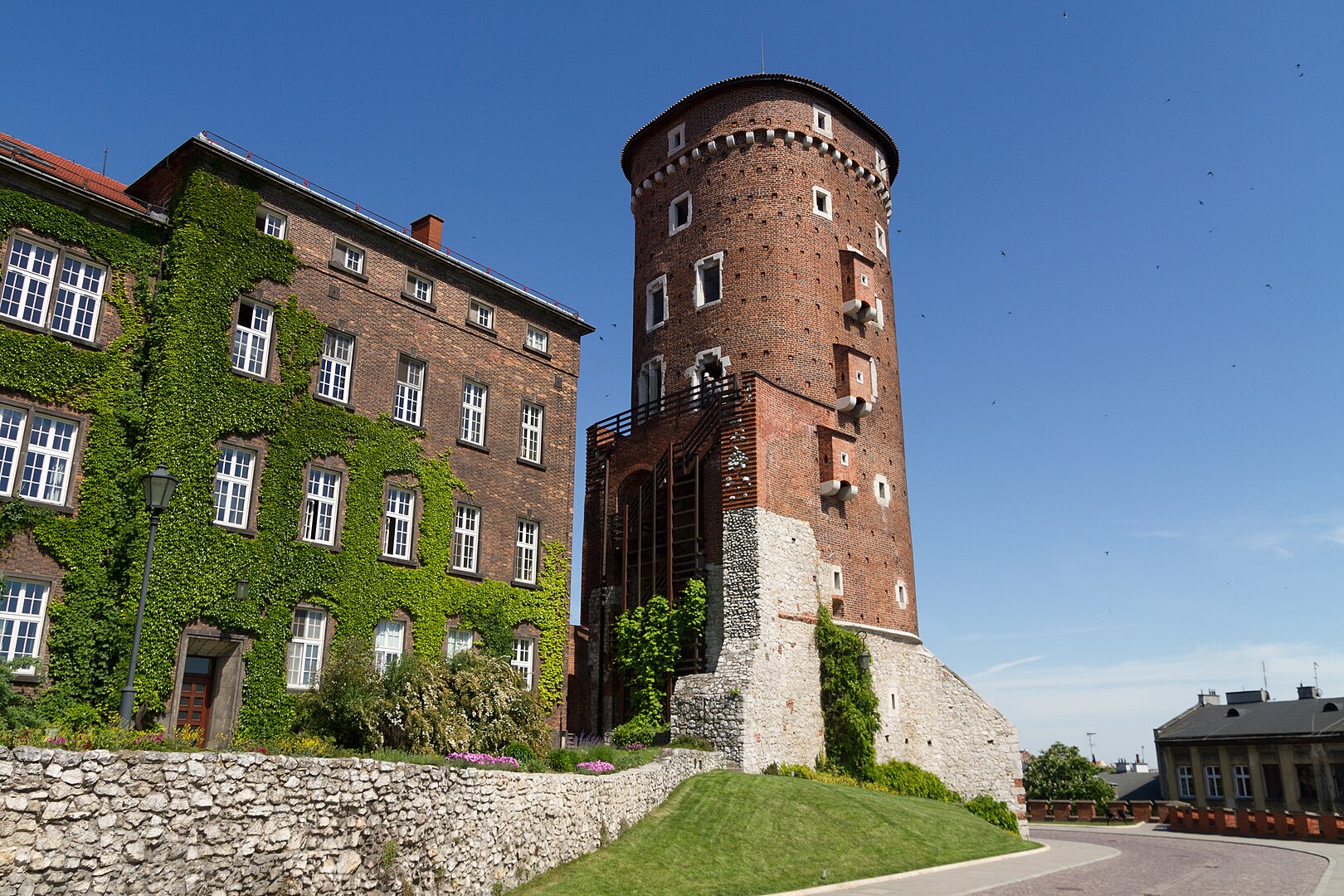
Sandomierz Tower is one of Wawel Castle's most distinctive defensive towers, part of the castle's medieval fortifications. Built in the 14th century, it served as a military watchtower, which offered a view of the Vistula River and the vicinity of Krakow. It was from here that soldiers could control the waterways and defend access to the royal residence.
The tower has retained its austere Gothic character, and its massive walls bear witness to its former defensive functions. Today, it can be visited by climbing a steep staircase to the top, from where it overlooks the extraordinary panorama of the city. This view allows you to feel the atmosphere of the old days, when guards looked out for enemy troops and signaled danger.
The Sandomierz Tower is not only a fragment of the fortified walls, but also a symbol of the strength and steadfastness of Wawel Castle, which for centuries was a stronghold of Polish statehood.
1️⃣2️⃣ Dragon's Den - a legendary attraction at the foot of the hill
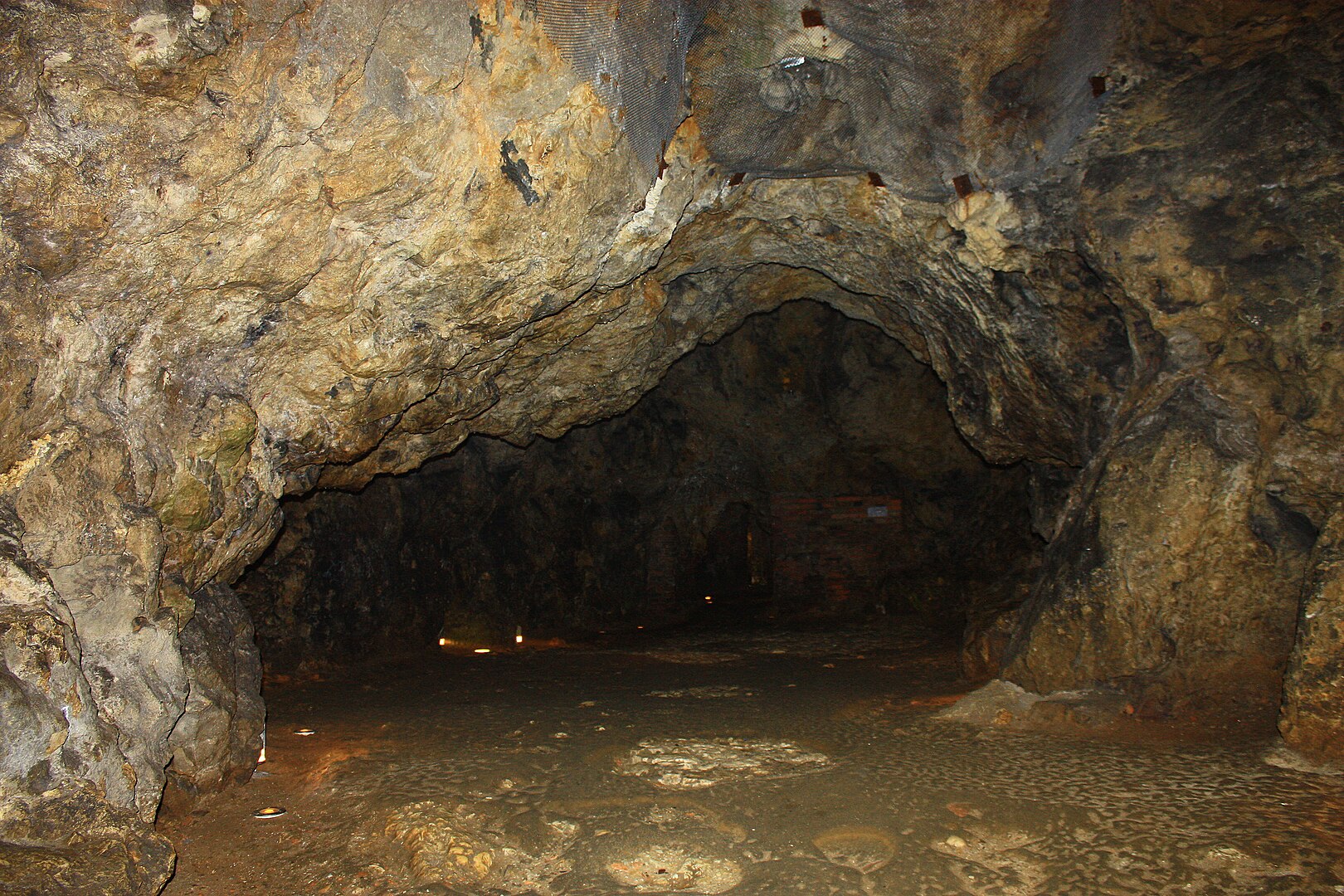
The Dragon's Cave is one of the most famous sites associated with Wawel Hill, shrouded in the the legend of the fierce dragon, which was supposed to terrorize the residents of Krakow. According to the legend, the beast lived in this very cavern at the foot of the castle, until a clever cobbler defeated it by serving a sheep filled with sulfur. The story has become a permanent part of Polish culture and continues to fascinate both children and adults to this day.
The cave, formed naturally in the limestone cliffs, is about 270 meters long, and a visit to it is a an extraordinary journey into the legend. There is an exit leading to it from the castle courtyard, and the exit is right on the banks of the Vistula River, by the famous statue of the Wawel Dragon breathing fire.
The Dragon's Cave is a combination of history, nature and fairy tales - a place that reminds us that Wawel Castle is not only a royal residence, but also a land of myths and extraordinary stories.
1️⃣3️⃣ Royal Gardens - restored Renaissance space
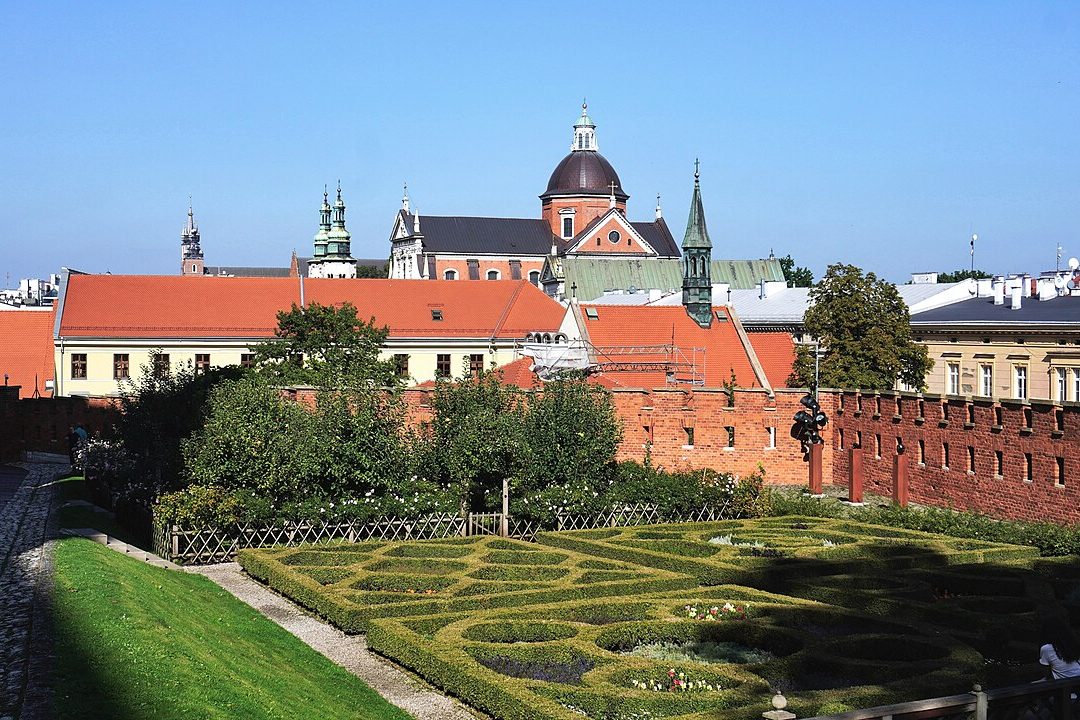
The Royal Gardens at Wawel Castle is a unique place where you can feel the atmosphere of the old court and see how it looked like royal rest area. Originally established in the time of Sigismund the Old, they were a place for rulers and their guests to stroll, meet and relax. Restored according to old plans and descriptions, today they are one of the most picturesque parts of the castle.
In the royal gardens it delights harmony of the renaissance layout - Carefully delineated alleys, flower and herb beds, and geometric shapes of vegetation. Here you can enjoy not only the beauty of nature, but also the view of the Vistula River and the panorama of Cracow, which create a unique scenery.
This place has something of a mystery about it - walking among the recreated compositions, it is easy to imagine a queen or king strolling through the same alleys. The royal gardens today are the green heart of Wawel Castle, which combines history, art and nature into one.
1️⃣4️⃣ Museum of Oriental Art - a unique collection at Wawel Castle
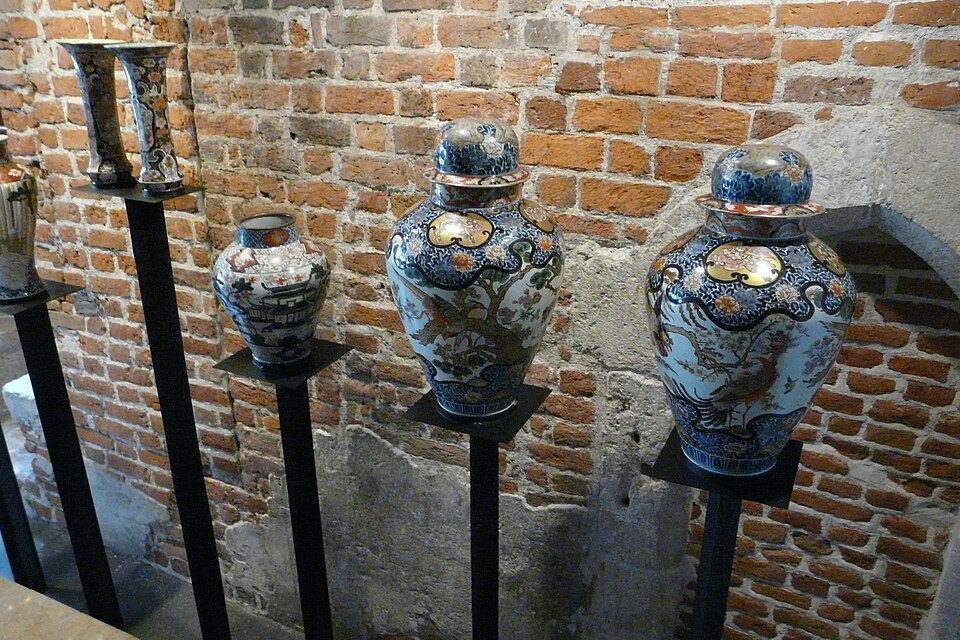
The Wawel Museum of Oriental Art is a veritable treasure trove of exotic works of art that came to Poland through royal diplomatic, trade and war contacts. It is one of the few places in Europe where you can see such a rich collection of objects from Turkey, Persia, India or the Far East.
Among the exhibits are stately turkish tentsthat were won as trophies during battles, as well as beautifully decorated weapons, ceremonial costumes, textiles and luxurious objects of daily use. Each of these is a testament Meeting of two worlds - East and West, and at the same time evidence of how rich and diverse the culture of the old Republic was.
The museum allows you not only to admire oriental masterpieces, but also to understand how important a role international contacts played in Polish history. It is a place that transports visitors to distant lands without leaving the walls of Wawel Castle, and shows that the castle was a center open to the world.
1️⃣5️⃣ Archaeological Reserve "Wawel Lost" - a journey into the medieval beginnings of the castle
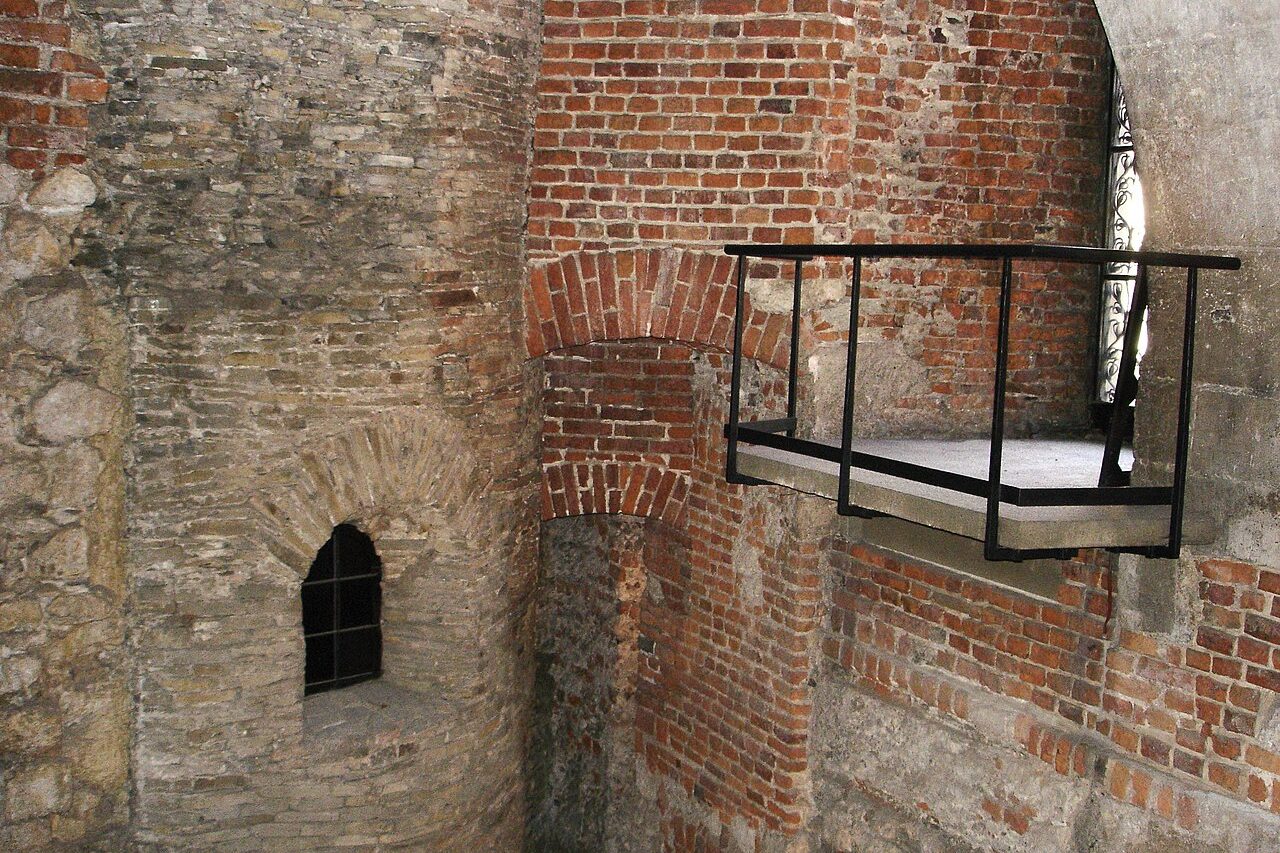
The "Lost Wawel" Archaeological Reserve is a remarkable place where you can go back to the beginnings of Polish statehood and see what Wawel looked like in the Middle Ages. Under the castle courtyards, relics of the oldest buildings have been discovered - the defensive walls, the foundations of the rotunda of St. Felix and St. Adaukt, and the remains of the princely residences from the time of the first Piasts.
The exhibition was designed to combine authentic excavations with modern multimedia. As a result, visitors can not only view ancient walls and stone details, but also use the visualizations, mockups and videos, which allow you to imagine life a thousand years ago.
This is a unique attraction that shows that Wawel is not only a Renaissance castle and royal cathedral, but also a the birthplace of Polish history. The "Lost Wawel" reserve makes the past tangible, and visiting the hill takes on a whole new dimension.
Summary - Wawel Castle as a living history museum
The Wawel Royal Castle is not only an impressive residence and a symbol of Poland's former power, but above all living history museum, where every corner has its own story. From the monumental Cathedral, to the glamorous royal apartments, to the legendary Dragon's Den, all these places form an extraordinary mosaic of culture, art and tradition.
Walking around Wawel, one can be transported to the times of coronations and court ceremonies, touch the Renaissance beauty in the Sigismund Chapel, listen to the sound of the Sigismund Bell or stop by the tombs of kings and national heroes. This is a space that combines sacred and profane, history and legend, art and everyday life.
Wawel Castle is a place where there is something for everyone - the architecture lover, the history enthusiast, and the tourist looking for a magical experience. It is the heart of Krakow and all of Poland, which has been beating to the rhythm of national memory for centuries and continues to fascinate successive generations.

